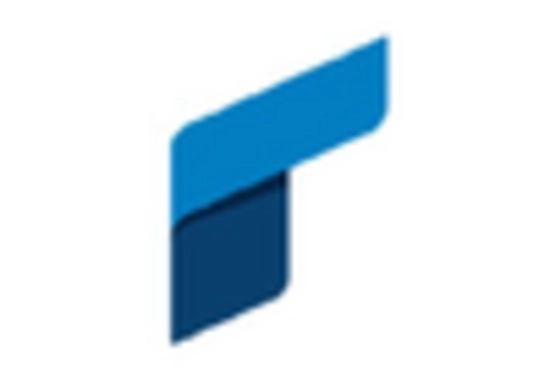Advancements in Battery Technology
The Military Vehicle Electrification Market is significantly influenced by advancements in battery technology. Recent developments in lithium-ion and solid-state batteries have led to increased energy density, reduced charging times, and enhanced safety features. These improvements are critical for military applications, where reliability and performance are non-negotiable. For instance, the latest battery systems can provide a range of over 300 miles on a single charge, making them suitable for various military operations. Additionally, the decreasing costs of battery production are making electrification more accessible for military fleets. As a result, the ongoing evolution of battery technology is expected to drive the adoption of electric military vehicles, thereby transforming the Military Vehicle Electrification Market.
Government Regulations and Incentives
The Military Vehicle Electrification Market is being shaped by stringent government regulations aimed at reducing carbon emissions and promoting sustainable practices. Many countries are implementing policies that mandate the transition to electric vehicles within military fleets. For example, certain defense budgets are now allocating funds specifically for the electrification of military vehicles, incentivizing manufacturers to innovate in this space. These regulations not only encourage the adoption of electric vehicles but also foster collaboration between government entities and private sector companies. As a result, the regulatory landscape is likely to accelerate the growth of the Military Vehicle Electrification Market, as stakeholders seek to comply with new standards while enhancing operational capabilities.
Increased Demand for Energy Efficiency
The Military Vehicle Electrification Market is experiencing a notable shift towards energy efficiency. As military operations become more resource-intensive, the need for vehicles that consume less fuel and produce lower emissions is paramount. Reports indicate that electrified military vehicles can reduce fuel consumption by up to 30% compared to traditional vehicles. This demand for energy-efficient solutions is driven by the necessity to lower operational costs and enhance sustainability. Furthermore, the integration of electric powertrains allows for the utilization of renewable energy sources, aligning military operations with broader environmental goals. Consequently, this trend is likely to propel investments in electrification technologies, fostering innovation within the Military Vehicle Electrification Market.
Focus on Operational Readiness and Versatility
The Military Vehicle Electrification Market is increasingly focused on enhancing operational readiness and versatility. Electrified military vehicles offer unique advantages, such as silent operation and reduced thermal signatures, which are crucial for stealth missions. Moreover, the ability to integrate advanced technologies, such as autonomous systems and artificial intelligence, into electric platforms is becoming more prevalent. This versatility allows military forces to adapt to various operational scenarios, from reconnaissance to combat support. As militaries worldwide recognize the strategic benefits of electrification, investments in electric vehicle platforms are expected to rise, further propelling the Military Vehicle Electrification Market.
Growing Emphasis on Sustainability and Environmental Responsibility
The Military Vehicle Electrification Market is witnessing a growing emphasis on sustainability and environmental responsibility. As military organizations face increasing scrutiny regarding their environmental impact, the transition to electric vehicles is seen as a viable solution. Electrification not only reduces greenhouse gas emissions but also minimizes the ecological footprint of military operations. Reports suggest that transitioning to electric military vehicles could lead to a reduction of up to 50% in emissions compared to conventional vehicles. This shift aligns with global sustainability goals and enhances the public image of military organizations. Consequently, the focus on sustainability is likely to drive further investments and innovations within the Military Vehicle Electrification Market.


















Leave a Comment